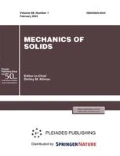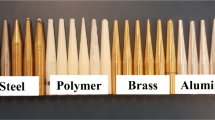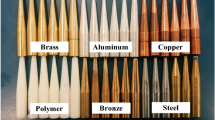Abstract—This paper deals with the quality prediction of the Single Point Incremental forming (SPIF) process. The quality prediction can be evaluated through five parameters: Roughness surface, thickness, springback, circularity and position errors. Despite the contribution of many researchers on the development of sheet metal forming process, the geometric accuracy of the formed part remains less developed and analyzed. Several parameters are relevant to this inaccuracy namely the complexity of the part geometry, the Elasto-Plastic Material Behavior and tool path strategy. The present work proposes an experimental study for a complex geometry part (double truncated cone) obtained by SPIF. To product a truncated cone, two different trajectories were used: single and alternating directions. While in literature three quality parameters are generally used (roughness surface, thickness and springback) we propose in the paper to predict moreover two other quality parameters which are the circularity and the position errors. To deal with the nonlinearity of the problem we proposed to use an ANN and benefit of its generalization capacities to generate new and unpredictable situations through different input parameters: Strategy tool path, incremental step size, spindle speed, feed rate, and the forming angle. To improve the generalization accuracy of the neural network the modified back propagation algorithm was used in the learning phase of one hidden multilayer neural network. Experimental results show that the new proposed prediction model allows to reach an accurate prediction more than 96.74% with respect to all the quality parameters.
Similar content being viewed by others
REFERENCES
E. Ceretti, C. Giardini, and A. Attanasio, “Experimental and simulative results in sheet incremental forming on CNC machines,” Int. J. Mater. Process. Technol. 152, 176–184 (2004).
G. Hirt, S. Junk, and N. Witulsky, Incremental sheet forming: quality evaluation and process simulation, in: Proceedings of the Seventh ICTP Conference, Yokohama, 2002, 925–930.
A. Daleffe, L. Schaeffer, D. Fritzen, and J. Castelan, “Analysis of the incremental forming of titanium F67 grade 2 sheet”, Key Engineering Materials, 554-557, 195–203 (2013).
D. Fritzen, A. Daleffe, J. Castelan, and L. Schaeffer, “Brass 70/30 and incremental sheet forming process”, Key Engineering Materials, 554–557, 1419–1431 (2013).
L. Ben Said, J. Mars, M. Wali, and F. Dammak, “Numerical prediction of the ductile damage in single point incremental forming process,” Int. J. Mech. Sci., 131–132, 546–558 (2017)
A. Fiorentino, C. Giardini, and E. Ceretti, “Application of artificial cognitive system to incremental sheet forming machine tools for part precision improvement,” Prec. Engng 39, 167–172 (2015)
J. J. Park and Y. H. Kim, “Fundamental studies on the incremental sheet metal forming technique,” Int. J. Mater. Proc. Tech. 140, 447–453 (2003).
T. J. Kim and D. Y. Yang, “Improvement of formability for the incremental sheet metal forming process,” Int. J. Mech. Sci. 42, 1271–1286 (2000).
Zhengfang Li, Shihong Lu, Tao Zhang, Zhixiang Mao, and Chun Zhang, “Analysis of geometrical accuracy based on multistage single point incremental forming of a straight wall box part,” Int. J. Adv. Man. Tech. 93 (5–8), 2783–2789 (2017).
Zhengfang Li, Shihong Lu, and Peng Chen, “Improvement of dimensional accuracy based on multistage single point incremental forming of a straight wall cylinder part,” Int. J. Prec. Engng Man September 18 (9), 1281–1286 (2017).
M. Ham and J. Jeswiet, “Dimensional accuracy of single point incremental forming,” Int. J. Mat. Form. 1 (1), 1171–1174 (2008).
Mariem Dakhli, Atef Boulila, and Zoubeir Tourki, “Effect of generatrix profile on single-point incremental forming parameters,” Int. J. Adv. Man. Tech. 93 (5–8), 2505–2516 (2017).
Vishal Gulati, Ashmin Aryal, Puneet Katyal, and Amitesh Goswami, “Process parameters optimization in single point incremental forming,” J. Inst. Eng. (India): C, 97 (2), 185–193 (2016).
A. Blaga and V. Oleksik, “A study on the influence of the forming strategy on the main strains, thickness reduction, and forces in a single point incremental forming process,” Adv. Mat. Sci. Engng 2013, 10 (2013).
A. Blaga, V. Oleksik, O. Bologa, and R. Breaz, “Experimental studies and FEM analysis regarding the influence of geometric parameters on strain, thickness reduction and forces in incremental forming process,” Annal “Eftimie Murgu” Resita Engineering hardness. ANUL XVIII NR. 3, 43–54 (2011).
Erika Salem, Jaekwang Shin, Maya Nath, Mihaela Banu, and Alan. I Taub, “Investigation of thickness variation in single point incremental forming,” Proc. Man. 5, 828–837 (2016).
Amar Kumar Behera, Bin Lu, and Hengan Ou, “Characterization of shape and dimensional accuracy of incrementally formed titanium sheet parts with intermediate curvatures between two feature types,” Int. J. Adv. Man. Tech. 83 (5–8), 1099–1111 (2016).
Amar Kumar Behera, Johan Verbert, Bert Lauwers, and Joost R. Duflou, “Tool path compensation strategies for single point incremental sheet forming using multivariate adaptive regression splines,” Comp.-Aid. Des. 45 (3), 575-590 (2013).
R. Araújo, et al. “Evaluation of the dimensional accuracy in single point incremental forming,” December, AIP Conf. Proc. 1567 (1), 832–835 (2013).
Vahdati Mehdi, Sedighi Mohammad, and Mahdavinejad Ramezanali, “Prediction of applied forces in incremental sheet metal forming (ISMF) process by means of artificial neural network (ANN),” J. Aut. App. Mech. 2 (2) 2014.
Varthini Gandhinathan and Pandivelan Jeevanantham, “Modelling and optimization of process parameters of the single point incremental forming of aluminium 5052 alloy sheet using genetic algorithm-back propagation neural network,” Int. J. Mech. Prod. Engng 2 (5) (2014).
Suresh Kurra et al, “Modeling and optimization of surface roughness in single point incremental forming process,” J. Mat. Res. Tech. 4 (3), 304–313 (2015).
M. Oraon and V. Sharma, “Predicting force in single point incremental forming by using artificial neural network,” Int. J. Engng. Trans. A: Basics 31 (1) 88–95 (2018)
G. Ambrogio, L. Filice, F. Guerriero, R. Guido, and D. Umbrello, “Prediction of incremental sheet forming process performance by using a neural network approach,” Int. J. Adv. Man. Tech. 54 921–930 (2011).
M. Luisa Garcia-Romeu, E. Ceretti, A. Fiorentino, and C. Giardini, “Forming force prediction in two point incremental forming using backpropagation neural networks in combination with genetic algorithms,” ASME 2010 Int. Man. Sci. Engng Conf. 2 99–106 (2010).
A. Mulay, S. Ben, S. Ismail, and A. Ben, “Artificial neural network modeling of quality prediction of a single point incremental sheet forming process,” Adv. Sci. Tech. Lett. 147 244-250 (2017).
C. Hartmann, D. Opritescu, and W. Volk, “An artificial neural network approach for tool path generation in incremental sheet metal free-forming,” J. Intell. Man. 30, 757–770 (2019).
M. J. Mirnia, M. Vahdani, and M. Shamsari, “Ductile damage and deformation mechanics in multistage single point incremental forming,” Int. J. Mech. Sci. 136, 396–412 (2018).
M. T. Hagan and M.B. Menhaj, “Training feedforward networks with the marquardt algorithm, neural networks,” IEEE Transactions 5, 989–993 (1994).
A. Lapedes and R. Farber, “How neural nets work” in eural Information Processing Systems,” Ed. by D. Z. Anderson (American Institute of Physics, New York, 1988), pp. 442–456.
Author information
Authors and Affiliations
Corresponding authors
About this article
Cite this article
Akrichi, S., Abid, S., Bouzaien, H. et al. SPIF Quality Prediction Based on Experimental Study Using Neural Networks Approaches. Mech. Solids 55, 138–151 (2020). https://doi.org/10.3103/S0025654420010033
Received:
Revised:
Accepted:
Published:
Issue Date:
DOI: https://doi.org/10.3103/S0025654420010033




